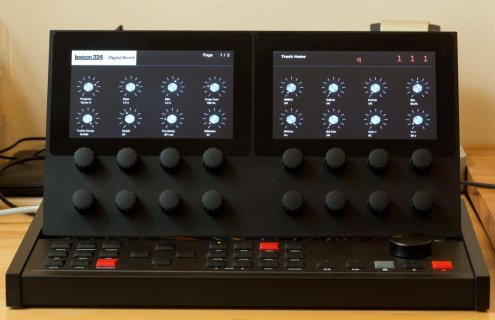sheilaanderson
New member
Hi, I am new to teensy development, so before I start any project, I first want to check if it is possible to achieve what I want with Teensy.
Here is what I would like to create:
a dedicated midi controller for soft synths (plug-ins). However, it should not just be able to sent values, but also receive and reflect current settings. So, when a different preset is selected, the new values should automatically be updated and shown on the midi controller.
This is how I would like to do it:
I want to use endless encoders with led rings or bars. The leds reflect the value of the current setting. Furthermore motorised faders, that also are automatically updated when a different setting is chosen.
This will be the environment: Logic as vst host on a Macbook.
The first question I have, is:
Is it possible with teensy to receive settings from a soft-synth (plugin) running in Logic (current selected plug-in). If so, where can I find any documentation or examples regarding which information is sent by Logic and how it can be processed with Teensy.
To be clear: it is not about controlling Logic nor its smart controls. I just want to control the plug-in itself. Logic is only the host.
Thank you in advance for your comments.
Here is what I would like to create:
a dedicated midi controller for soft synths (plug-ins). However, it should not just be able to sent values, but also receive and reflect current settings. So, when a different preset is selected, the new values should automatically be updated and shown on the midi controller.
This is how I would like to do it:
I want to use endless encoders with led rings or bars. The leds reflect the value of the current setting. Furthermore motorised faders, that also are automatically updated when a different setting is chosen.
This will be the environment: Logic as vst host on a Macbook.
The first question I have, is:
Is it possible with teensy to receive settings from a soft-synth (plugin) running in Logic (current selected plug-in). If so, where can I find any documentation or examples regarding which information is sent by Logic and how it can be processed with Teensy.
To be clear: it is not about controlling Logic nor its smart controls. I just want to control the plug-in itself. Logic is only the host.
Thank you in advance for your comments.


